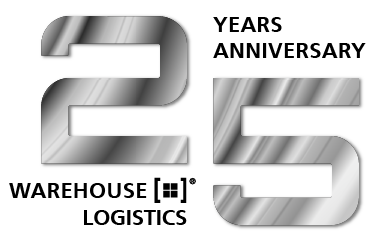Novità
Indicare la sintesi delle news
A False Dilemma in Automation
16.09.2025
WMS: Substitution or Synergy?
The debate about the future of logistics is often reduced to a simple formula: automation replaces people. But this view falls short and misrepresents reality. Even the most advanced conveyor systems and robotics hit their limits where flexibility, variability, and situational action are required. At the same time, it would be just as wrong to dismiss manual work as a relic of the past. In practice, value creation doesn’t arise from either-or thinking, but from interplay.
Especially in an industry shaped by dynamics, seasonal fluctuations, and heterogeneous assortments, the right balance determines efficiency and resilience. Pick by Voice is not just a complement here but often the strategically better choice—particularly when complexity and adaptability are in demand.
Anyone aiming to make a warehouse more efficient often faces a crossroads:
- Automation for high-volume processes:In standardized scenarios with homogeneous assortments, predictable workflows, and steady demand—such as in the automotive industry or centralized distribution centers—automated systems show their strength. Speed, precision, and economies of scale deliver unmatched efficiency. But these advantages are fragile: seasonal fluctuations, volatile assortments, or misinvestments can quickly lead to overcapacity.
- Pick by Voice for complex environments:Where assortments are granular, diverse, or prone to disruption, Pick by Voice proves its worth through flexibility and operational robustness. Pickers keep both hands free, can react immediately to assortment changes, and benefit from fast scalability. During peak times, staff can be integrated at short notice—a benefit rigid conveyor systems cannot offer.
As so often in logistics, the strength lies not in either-or but in a hybrid approach. Automation drives efficiency in standardized high-volume processes, while Pick by Voice creates value where flexibility, variety, and human intelligence are required. The key, however, is not mere coexistence but the integration of both worlds. The more diverse the technologies used, the more important it becomes to have a central system that orchestrates workflows, consolidates data streams, and ensures operational adaptability. This role is fulfilled by a modern Warehouse Management System (WMS): it connects stationary automation, autonomous mobile robots, and voice solutions into a consistent process landscape, ensuring businesses remain resilient even in dynamic environments.
Equally crucial is avoiding planning mistakes. Overstated performance promises, inadequate scaling strategies, or neglecting non-item handling are among the most common pitfalls. Since a flawless process landscape will always remain an illusion, systems must be designed so that disruptions, misidentifications, or failures do not lead to breakdowns but remain manageable exceptions.
Sounds complicated? It doesn’t have to be. Here are some tips from our experts:
Do’s
-
Embrace hybrid approaches: use automation where processes can be standardized, and deploy Pick by Voice as a strategic complement.
-
Establish a Warehouse Management System as the central integration platform, especially for AMR fleets and flexible warehouse structures.
-
Build scalability in from the start: simulate seasonal peaks and future growth early on.
-
Plan error- and NIO-handling proactively and identify bottlenecks as early as the concept phase.
-
Relieve employees by using PBV technologies while embedding them into automation strategies.
Don’ts
-
Invest in rigid conveyor systems without critical evaluation.
-
Take manufacturer claims about throughput and efficiency at face value—always test real-world suitability in your own scenario.
-
Treat Pick by Voice as a mere fallback option; it’s a strategic tool in the hybrid setup.
-
Underestimate data integration in the WMS; missing interfaces can massively slow down automation projects.
-
Plan without scenario techniques: warehouse concepts must remain robust against different future developments.
